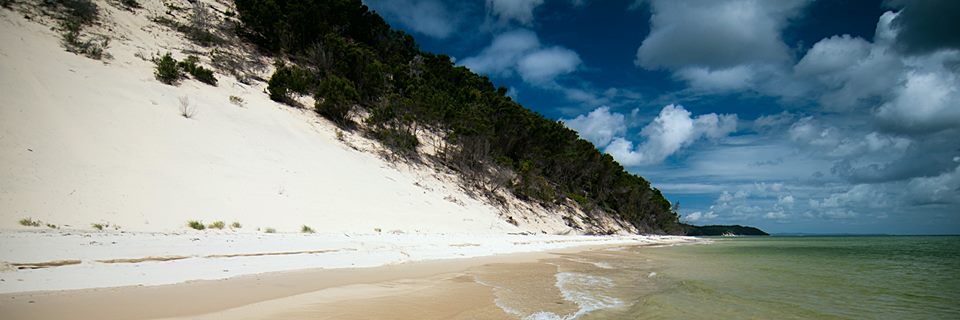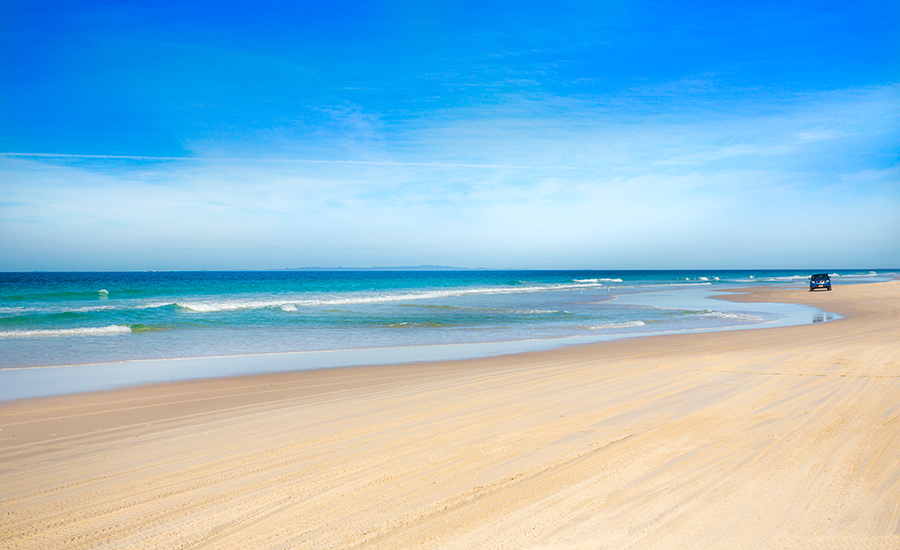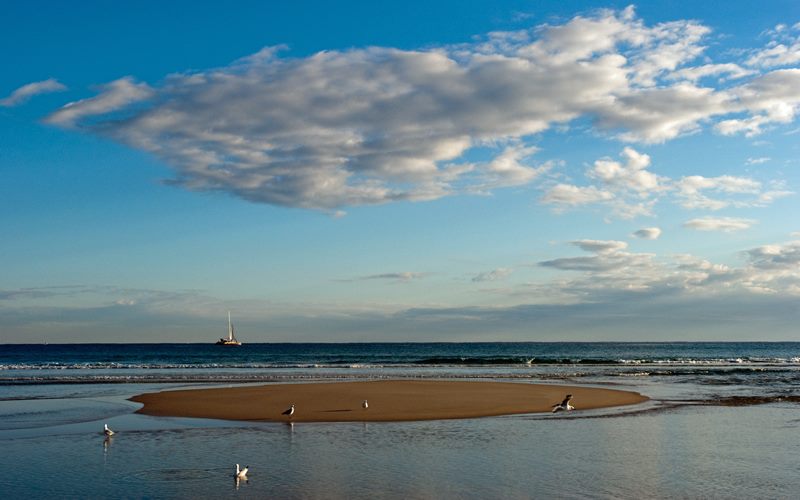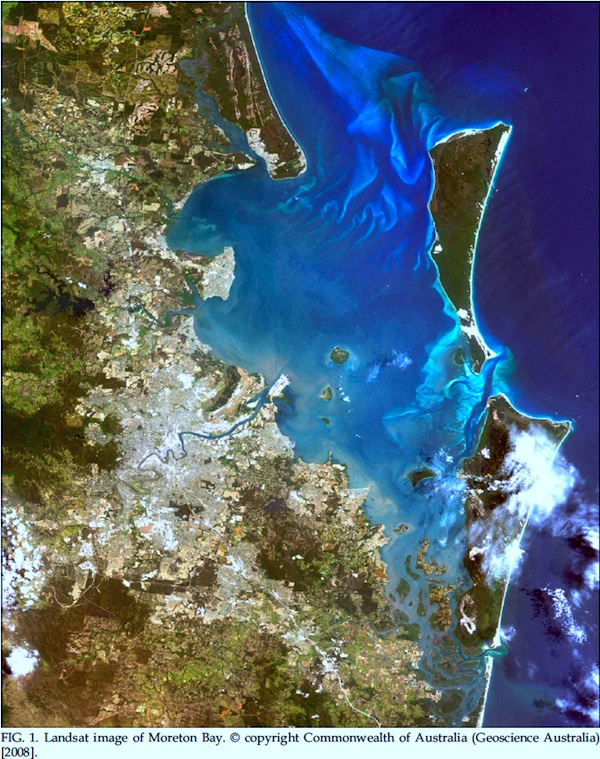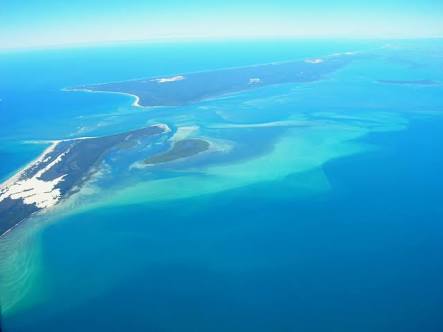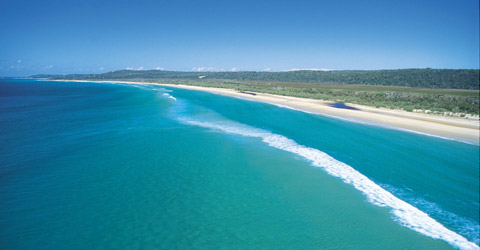Moreton Bay Marine Park
"Moreton Bay, stretching 125km from the Gold Coast to the Sunshine Coast, is one of Queensland's most important natural, recreational, cultural and economic resources."
(Queensland Parks and Wildlife Service August 1998)

This Marine Park was declared in 1993 and increased in 1997 to encompass most of Moreton Bay's tidal lands and waters. The bay is protected to the east by three large sand islands, Moreton Island and North and South Stradbroke Islands, and to the North by Bribie Island. Within the Marine Park there are other islands such as St Helena, Peel, Coochiemudlo, Macleay, and Russle, which are more typical of the main land. There are also four islands which are the remains of coral atolls, Mud, Green, King and Bird.
Queensland National Parks and Wildlife have the prime responsibility to mange the Marine Park. Management of the Marine Park provides a balance between human needs and the need to conserve the Bays special values. QNPW has a zoning system implemented which allows multiple uses for the Bay.
Moreton Bay provides an important protection area for a great diversity of animals. The bay is one of the most important breeding areas for the increasingly rare Dugong. There are special protection zones within the Park for Turtles and Dugongs to be free of boat traffic. The Bay is also an important site for migrating birds. Every year during our summer months we are visited by over 50,000 wading birds who gain strength and reserves for their migration to the Arctic Circle during our winter. For its crucial role, Moreton Bay has been listed under the United Nations Convention on Wetlands of International Importance.
The Bay is a large shallow expanse of water. Navigation through these water ways require a great deal of care and boating experience. Due to the shallowness of the bay it can become quite treacherous in strong winds.

